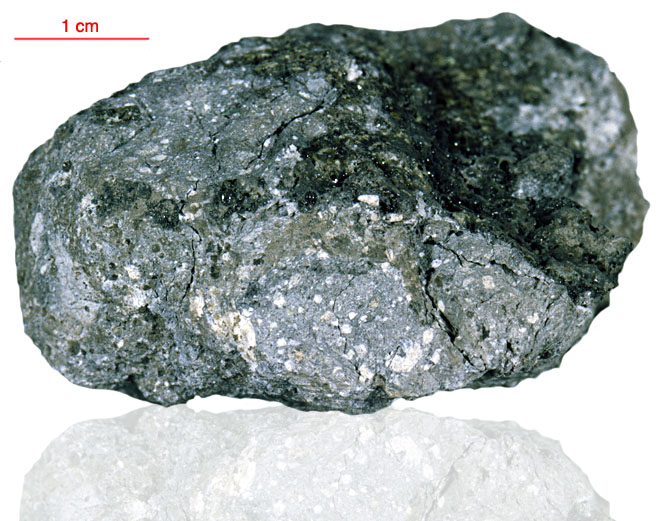
Fact sheet
61536 is a clast-laden grey breccia containing a large white clast held within a glass matrix. The large white clast is granoblastic anorthosite with 85% plagioclase feldspar (rotation 1). Many grains in this clast meet in triple junctions. Other components of the breccia include basalt and mineral clasts and an occasional glass bead.
The sample weighed 86 grams before analysis and has not been dated.
Further details of this and other Apollo samples are here: http://curator.jsc.nasa.gov/lunar/
The Apollo 16 landing site was in the hilly region around Descartes crater in the lunar highlands. The landing spot was chosen to allow the astronauts to gather geologically older lunar material (Descartes Formation and the Cayley Formation) than the samples obtained in the first four landings, which were in or near lunar maria.
The mission lasted 11.1 days, with a stay on the lunar surface of 71 hours. The crew were on the lunar surface for 20.2 hours during which they traversed approximately 27 kilometers and collected approximately 96 kilograms of samples.
Apollo 16 was launched on 16 April 1972.






